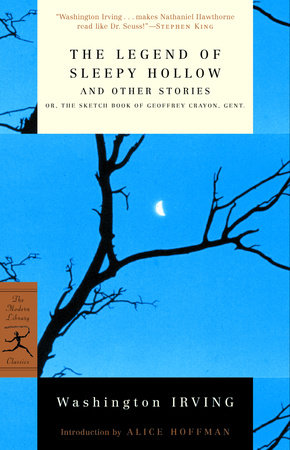The Legend of Sleepy Hollow and Other Stories Reader’s Guide
By Washington Irving


1. Why does Iriving call this collection The Sketch Book? What effect is he trying to achieve with the preponderance of visual imagery?
2. How do the stories in The Sketch Book inform one another and function one another and function as a collection? How do the stories set in America–"The Legend of Sleepy Hollow" and "Rip Van Winkle"–distinguish themselves from Geoffrey Crayon’s vignettes about his travels in England?
3. Alice Hoffman says in her Introduction that Irving is thought to have created the short-story genre in America. What constitutes a short story, and what are the hallmarks of the American short story? How does it break with its European predecessors yet still work within tradition?
4. Why do you think Washington Irving uses the writing and narration of the fictional Diedrich Knickerbocker (the pen name he used in writing his famous spoof A History of New York) to bookmark "The Legend of Sleepy Hollow"? What effect does this have on the story itself? does it lend credulity or only make it more fantastic?
5. The poem that Irving quotes at the outset of "The Legend of Sleepy Hollow"–"The Castle of Indolence" by James Thomson–recounts the story of an enchanter who deprives all who enter his castle of their free will and their resolve. Why do you think Irving chose this particular poem? How does it inform your reading of the story?
6. How is this story influenced by the gothic literary tradition that preceded it, and how–in its setting, mood, plot, and message–does it embrace the gothic itself?
7. How has the village of Sleepy Hollow been affected or, conversely, unaffected by the American Revolution? In what context does the narrator refer to it?
Just for joining you’ll get personalized recommendations on your dashboard daily and features only for members.
Find Out More Join Now Sign In